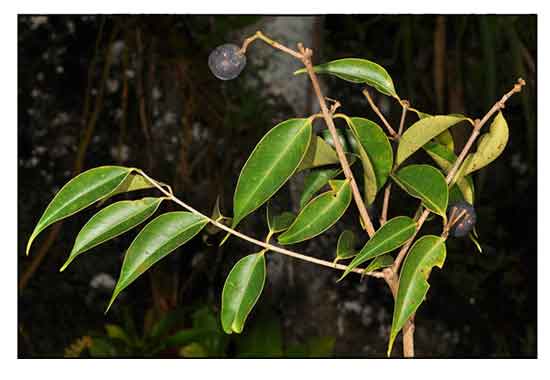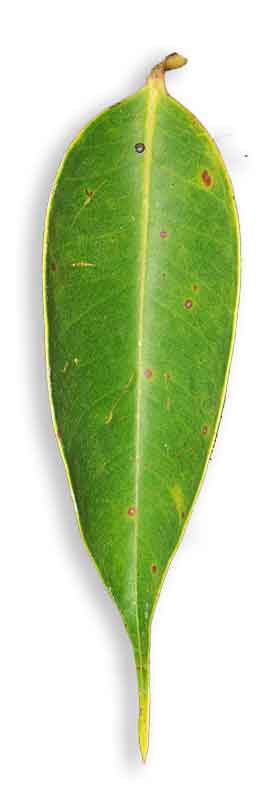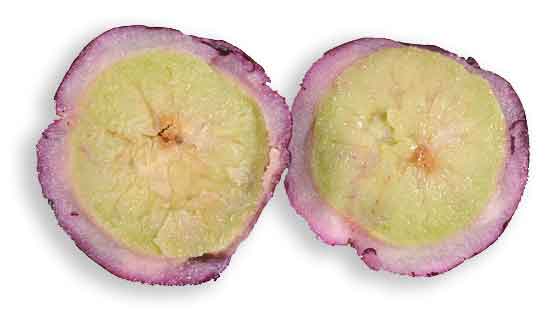
Family • Myrtaceae
Binoloan
Syzygium acuminatissimum (Blume) DC.
LAHI-LAHI
Xiao pu tao
| Scientific names | Common names |
| Acmena acuminatissima (Blume) Merr. & L.M.Perry | Binoloan (Tagalog) |
| Acmena dielsii Merr. & L.M.Perry | Lahi-lahi (Mindanao) |
| Acmena laevifolia (Ridl.) Merr. & L.M.Perry | |
| Acmena polyantha (K.Schum. & Lauterbn.) Merr. & L.M.Perry | |
| Eugenia acuminatissima (Blume) Kurz | |
| Eugenia attenuatifolia Merr. | |
| Eugenia cumingiana S.Vidal | |
| Eugenia cuspidato-obovata Hayata | |
| Eugenia eucaudata Elmer ex Merr. | |
| Eugenia gardneri Fern.-Vill. | |
| Eugenia laevifolia Ridl. | |
| Eugenia subdecurrens (Miq.) Merr. & Chun | |
| Jambosa acuminatissima Blume | |
| Myrtus acuminatissima Blume | |
| Syzygium acuminatissimum (Blume) DC. | |
| Syzygium cumingianum (Vidal) Gibbs | |
| Syzygium cuspidato-obovatum (Hayata) Mori | |
| Syzygium subdecurrens Miq. | |
| Xenodendron polyanthum K.Schum. & Lauterb. | |
| Syzygium acuminatissimum is an accepted species. KEW: Plants of the World Online | |
| Other vernacular names |
| BORNEO: Arang, Obah, Ubah samak. |
| CHINA: Xiao pu tao. |
| PAPUA NEW GUINEA: Kec, Nim. |
Botany
Distribution Constituents Properties Studies Availability |
November 2023
![]()
 |
| PHOTOS / ILLUSTRATIONS |
| IMAGE SOURCE: Myrtaceae : Syzygium acuminatissimum / Fruiting twig / Copyright © 2017 by P B Pelser & J F Barcelona (contact: pieter.pelser@canterbury.ac.nz) [ref. DOL117006] / Non-Commercial Use / click on image or link to go to source page / Phytoimages.siu.edu |
| OTHER IMAGE SOURCE: Myrtaceae : Syzygium acuminatissimum / Leaf / Copyright © 2017 by P B Pelser & J F Barcelona (contact: pieter.pelser@canterbury.ac.nz) [ref. DOL116959] / Non-Commercial Use / Image modified / click on image or link to go to source page / Phytoimages.siu.edu |
| OTHER IMAGE SOURCE: Myrtaceae : Syzygium acuminatissimum / Sections of fruit / Copyright © 2017 by P B Pelser & J F Barcelona (contact: pieter.pelser@canterbury.ac.nz) [ref. DOL116914] / Non-Commercial Use / Image modified / click on image or link to go to source page / Phytoimages.siu.edu |
Additional
Sources and Suggested Readings |
• |
DOI: It is not uncommon for links on studies/sources to change. Copying and pasting the information on the search window or using the DOI (if available) will often redirect to the new link page. (Citing and Using a (DOI) Digital Object Identifier) |
| List of Understudied Philippine Medicinal Plants |
| New plant names needed The compilation now numbers over 1,400 medicinal plants. While I believe there are hundreds more that can be added to the collection, they are becoming more difficult to find. If you have a plant to suggest for inclusion, native or introduced, please email the info: scientific name (most helpful), local plant name (if known), any known folkloric medicinal use, and, if possible, a photo. Your help will be greatly appreciated. |
• |
 |




